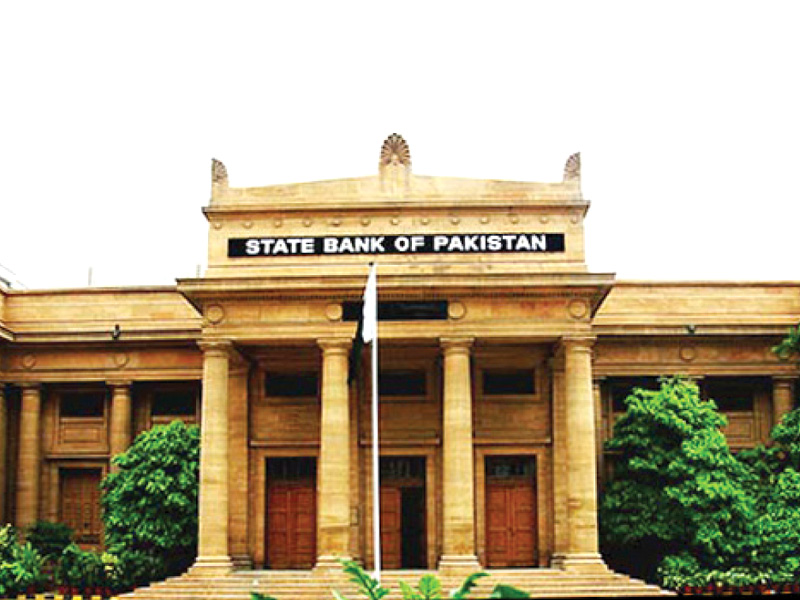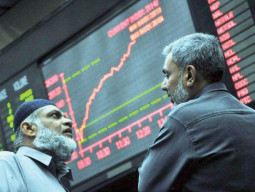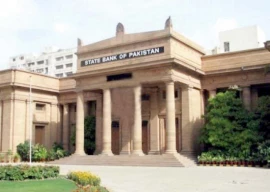
The proposed amendments to the State Bank of Pakistan (SBP) Act have generated a lot of criticism. Broadly, the criticism focuses on two things: one, the amendments are being allegedly pushed through at the behest of the International Monetary Fund (IMF), which, as the argument goes, should be a sufficient reason for setting them aside.
Two, the proposed changes, if carried through, will spell disaster for Pakistan’s economy, inter alia, by giving untrammeled powers to the central bank. The central bank’s working has hitherto been governed by the SBP Act, 1956 as amended from time to time.
Over the years, questions have been raised over the efficiency and independence of the bank – both being closely related. In particular, the SBP’s readiness to finance the government’s fiscal deficit by printing currency notes, which is highly inflationary in its effects, has come under fire. In 2015, the SBP Act was further amended with a view to shoring up its independence.
The major breakthrough was the constitution of the Monetary Policy Committee (MPC) to perform most of the key functions of the erstwhile Central Board of Directors (CBD). In addition to the general superintendence of the SBP, the CBD was tasked with formulating and monitoring monetary-cum-credit policy and determining the credit limit extended by the bank to central and provincial governments.
All members of the CBD, chaired by the governor and including among others federal finance secretary, were nominees of the federal government, which in the eyes of critics made it difficult for the bank to draw up an independent monetary policy or resist expansion of an already massive public debt.
The MPC, created by the 2015 amendments, is headed by the SBP governor and includes (a) three senior executives of the bank nominated by the governor, (b) four members of the CBD – renamed as the board of directors – nominated by the board itself, and (c) three external members, each of whom is an economist, appointed by the federal government on recommendation of the board.
The committee is also supposed to support general economic policies of the government.
Salient features
The draft SBP Amendment Act 2021 is aimed at further increasing the central bank’s autonomy. Its salient features are:
First, the objectives of the SBP have been defined more clearly through a threefold classification: Domestic price stability will be the primary objective, while financial stability and support to government’s policies to foster development and fuller utilisation of resources will be its secondary and tertiary functions respectively.
Two, the authorised capital of the SBP will be raised to Rs500 billion, including the initial paid-up capital of Rs100 billion, from Rs100 million, all of which at present is fully paid-up.
Three, the government will no more be allowed to borrow directly from the SBP. At present, a limited credit window is available to the government with the stipulation that net borrowing from the central bank in a quarter will be zero. Four, the SBP’s “quasi-fiscal” operations, such as rural, industrial, housing and export credits and loan guarantees will be disbanded.
However, the bank’s refinancing facilities, such as those for exporters, will continue. Five, the Monetary and Fiscal Policies Coordination Board, set up under Section 9(b) of the SBP Act, will be abolished. This is another significant provision.
The coordination board, which is headed by the federal finance minister and includes the SBP governor and heads of some economic ministries, is tasked with coordinating fiscal, monetary and exchange rate policies to ensure consistency among the key macroeconomic targets set by the government.
In place of the coordination board, the proposed amendments seek to establish a close liaison between the finance minister and the SBP governor on matters of common concern. Six, at present, the SBP governor is appointed by the president for a three-year renewable term.
The president can also remove him over incapacity to perform his functions, or misconduct or breach of trust.
The draft Act seeks to extend the term of governor’s office to five years, with the possibility of renewal.
Although the president will still have powers to remove the governor, the sacking will be for a serious misconduct as determined before a court of law.
This will give the SBP governor security of tenure, which is necessary if the central bank is to work independently.
Seven, the governor will submit an annual report to parliament on the conduct of monetary policy and state of the economy. In addition, parliament may require any senior official to attend at such other times as may be required.
At present, the board submits a quarterly report to parliament.
Thus, the SBP will continue to be answerable to parliament. It follows that the thrust of the proposed amendments is to make the SBP more independent than it is at present.
In modern economies, as a rule, the formulation of fiscal and monetary policies is segregated between the central government and the central bank respectively.
A broad agreement exists among economists and policymakers that the latter, though part of the state machinery, should be fully independent of the control of the former in its operations.
The major argument in support of the central bank autonomy is that the governments are apt to stoke fiscal expansion.
In the absence of sufficient tax revenue to bankroll public expenditure, the government has to rely on borrowing from the central bank, which by increasing money supply in the market drives up prices.
This results in the double whammy of inflation. Increase in government spending is inflationary, while financing increased spending through printing of currency is also inflationary.
Though moderate inflation is essential for economic growth, higher inflation, particularly when it is unanticipated, creates uncertainties in the economy, discourages productive investment and encourages speculative investment at the expense of employment generation and economic growth.
As wage increase generally lags behind price increase, the salaried class and workers are made worse off.
In order to create a semblance of macroeconomic stability, the government may also be keen to maintain an overvalued exchange rate by making the central bank inject hard foreign exchange into the market, thus hurting exports, encouraging imports and running down foreign exchange reserves.
This happened during the 2015-17 period, when the rupee was kept artificially stable, thus ballooning up trade and current account deficits, causing depletion of forex reserves and in the end forcing the government to go to the IMF for a bailout package.
An autonomous central bank would be in a better position to resist such misguided attempts at exchange rate stability. Independence, however, doesn’t mean absence of any checks and balances.
In a democracy, all public institutions ought to be responsible to parliament. As mentioned above, the proposed amendments will not scrap or dilute parliamentary oversight over the SBP, they will only free it of the executive’s control.
At any rate, the draft law will be discussed and finally rejected or approved by parliament, with or without amendments. Prima facie, there’s a strong case for an autonomous SBP.
THE WRITER IS AN ISLAMABAD-BASED COLUMNIST



1730959638-0/trump-(19)1730959638-0-165x106.webp)















COMMENTS (1)
Comments are moderated and generally will be posted if they are on-topic and not abusive.
For more information, please see our Comments FAQ